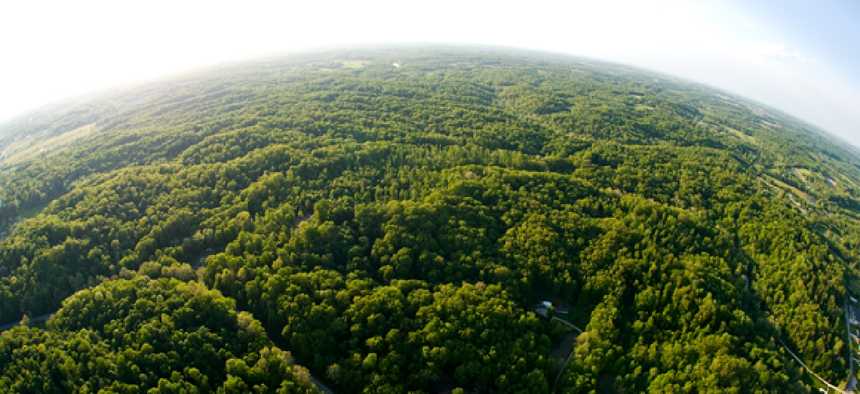DARPA wants to shrink LIDAR tech

The Defense Advanced Research Projects Agency aims to reduce the size of traditional, bulky telescoping devices by transferring their light-catching powers to flat, inexpensive, saucer-sized semiconductors.
While the computer evolution from room-sized mainframes to smartphones took less than 70 years, the telescope has seen only limited, incremental improvement in its 400‐year history.
The Defense Advanced Research Projects Agency hopes to bend that innovation curve. DARPA hopes to revolutionize optical technologies with its Modular Optical Aperture Building Blocks (MOABB) program, which aims to build advanced optical array technologies that would lead to the development of an ultracompact light detection and ranging, or LIDAR, system.
The idea is to shrink the size of traditional, bulky telescoping devices to reduce size, weight, power and cost by transferring their light-catching powers to flat, inexpensive, saucer-sized semiconductor wafers.
LIDAR provides three-dimensional mapping capabilities from the air by beaming light from a platform and constructing an image from the returning beam. In fact, during a recent DARPA Robotics Challenge, LIDAR-enabled “eyes” let robots see their surroundings and has allowed some autonomous vehicles to sense hazards around them.
Most conventional LIDAR systems are too large, expensive, heavy and slow for defense applications, however. So the MOABB program seeks to develop compact systems that can provide real-time data on “subtly changing positions and velocities of nearby objects,” DARPA said, noting that the range of applications would be “enormous.”
Among potential applications is the ability to penetrate foliage to locate hidden threats beneath tree cover, which DARPA described as a “breakthrough that could revolutionize situational awareness in contested areas.”
“You would be able to fly a MOABB-enabled helicopter or drone low over a lush forest canopy and be able to effectively peel back the leaves and see a sniper or a tank underneath,” said Joshua Conway, DARPA program manager. ”It could instantaneously give you the range and velocity of everything up to a football field’s distance away with the resolution of a camera. And with accompanying visualization tools,” he added, “you would feel like you are on the ground with nothing blocking your vision.”
Additionally, compact LIDAR capabilities could be used for collision avoidance systems on unmanned aerial vehicles operating in small spaces, precision motor control for robotic limbs, high-capacity light-based communications and data-transfer systems and, lastly, in immersive training gaming or training.
A proposers day will be hosted at DARPA’s headquarters on Dec 17, which will provide more detailed information to potential partners.
NEXT STORY: Hackathons tackle suicide prevention





